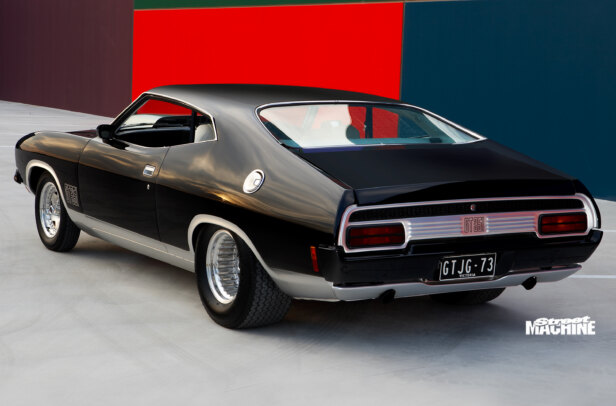WHILE many might consider NASCARs to be low-tech slot cars that only turn left, the late 1960s was a time of radical aerodynamic development in the category. Manufacturers recognised that the blocky styling of their muscle cars just wouldn’t cut it competitively, kicking off an era known as the ‘aero wars’.
First published in the October 2021 issue of Street Machine
After Dodge trialled a slicked-up Charger 500, Ford brought out the long-nosed Torino Talladega and Mercury Cyclone Spoiler II. Chrysler quickly responded, employing the help of rocket scientists to develop the ‘winged warriors’ – the Dodge Charger Daytona in 1969 and the Road Runner-based Plymouth Superbird in 1970. The Daytona and Superbird are renowned for their radical aero packages, including a high-deck rear wing, pointy nosecone and flush-mount rear window.
Although the aerodynamics of these cars evolved considerably throughout this period, the safety of the cars themselves had not. With the ‘aero’ cars regularly surpassing the 200mph mark on track, NASCAR changed the rules for the 1971 season, stating that aero cars could race only if the engine capacity didn’t exceed 305ci. Before long, they were banned completely.
This is where long-time Street Machine reader Clayton Woolcock comes in: “Imagine if Ford had applied the same aero to an XA-XC Falcon coupe, and built a winged ‘aero warrior’ of their own? Allan Moffat had history with Bud Moore Engineering in the USA, having sourced his famous Boss 302 Trans-Am Mustang from them. So what if, while Moffat’s ‘Project B52’ Brut 33 XB hardtop was being built and tested for Bathurst in the States, BME saw the Aussie coupe as being more suited to NASCAR than their Torinos, and developed a winged version of the hardtop?”
Hence, ‘Project Wedge-Tail’ was born. The name is a nod to our kangaroo-hunting national bird of prey – plus it lets us borrow the eagle graphic from the limited-run XA Superbird!
Assuming the 305ci rule stayed in place from the 1971 NASCAR season, the car would run a BME-built Boss 302, and David ‘Silver Fox’ Pearson would most likely be steering it, given his involvement with BME in the early 70s.
The starting point of the design was to place the defining features of the winged cars – the wedge-shaped nosecone and massive rear wing – on the hardtop. For these components, a lot of inspiration came from the Torino King Cobra II and winged 1971 Road Runner prototypes, as they were the last, and possibly most radically styled, cars of the aero wars era.
Up front, the initial form of the nosecone was inspired by the 1971 Road Runner prototype, bringing the top guard line and lower bodyline that runs up and over the arches to a sharp point at the front of the car. While this shape allowed the nosecone to complement the coupe’s curves, it had to look like it belonged to a Ford, so the front edge was brought down considerably and the ‘chin’ brought forward, drawing influence from the King Cobra II prototype. The large front spoiler and nose strakes were brought in from the winged Road Runner design too, with a small opening at the front to let the little 302 breathe.
A huge wing resembling those seen on Chrysler’s aero cars was then placed atop the Falcon’s rear quarters, with the vertical stabilisers propping up two horizontal aerofoils rather than the single-aerofoil design of the Daytonas and Superbirds. Before the reduced displacement rules for aero cars were announced, Chrysler was hard at work developing a winged aero package for the ’71 Road Runner. Results of scale-model testing suggested that the bi-planar design generated greater downforce than other wing configurations. So, by the time the XB arrived on American soil, it’s likely that NASCAR teams were familiar with this style of wing.
Other aero-enhancing features include capped bumper ends, door handles and tail-light panel to encourage easier airflow over these areas. A base-model XB bonnet was chosen in favour of the GT bonnet for the same reason. Borrowed from the Daytona and Superbird, front guard vents relieve air pressure from under the front end of the car as a means of increasing downforce.
In addition to these big aero features, a multitude of smaller details were worked into the concept to ensure it looked like a real NASCAR, adding manufacturer and sponsor logos, bonnet and bootlid pins, and side-exit exhaust.
We wonder how different our racing history would have been if winged Aussie muscle ended up dominating NASCAR!
THANKS to Iain Kelly for his wealth of stock-car racing knowledge, as well as Chris Thorogood and Conor Gooner for their tips.




Comments